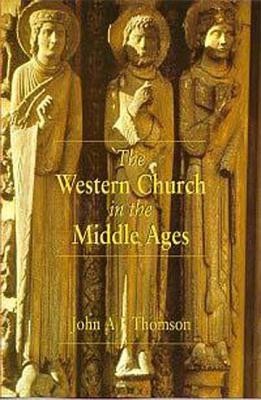
- We will send in 10–14 business days.
- Author: John a Thomson
- Publisher: A&c Black 3pl
- ISBN-10: 0340601183
- ISBN-13: 9780340601181
- Format: 15.2 x 22.6 x 2.3 cm, softcover
- Language: English
- SAVE -10% with code: EXTRA
Reviews
Description
From its origins in the ancient world as a rival to traditional paganism, Christianity has grown to become one of the greatest religions the world has ever known. How the church took over spiritual control of Western Europe to become the very foundation of medieval life--setting a moral agenda
for all of society and dominating its intellectual pursuits--is the guiding inquiry at the heart of this book. Covering the period between the fall of the Roman Empire and the Reformation, this account is structured in three chronological blocks: the gradual development of unity within the Western
Church up to the eleventh century; the centralization phase between the eleventh and thirteenth centuries; and the break-up of the centralization of power in the later Middle Ages. Organizational developments and changes in spirituality and doctrine are examined, and the history of the papacy is
situated in the wider context of changes in both ecclesiastical and lay society. Intellectual developments and the rise of heresy--at both the elite and popular levels--are also considered in a telling exploration of the mental world of medieval Christendom.
EXTRA 10 % discount with code: EXTRA
The promotion ends in 20d.16:53:34
The discount code is valid when purchasing from 10 €. Discounts do not stack.
- Author: John a Thomson
- Publisher: A&c Black 3pl
- ISBN-10: 0340601183
- ISBN-13: 9780340601181
- Format: 15.2 x 22.6 x 2.3 cm, softcover
- Language: English English
From its origins in the ancient world as a rival to traditional paganism, Christianity has grown to become one of the greatest religions the world has ever known. How the church took over spiritual control of Western Europe to become the very foundation of medieval life--setting a moral agenda
for all of society and dominating its intellectual pursuits--is the guiding inquiry at the heart of this book. Covering the period between the fall of the Roman Empire and the Reformation, this account is structured in three chronological blocks: the gradual development of unity within the Western
Church up to the eleventh century; the centralization phase between the eleventh and thirteenth centuries; and the break-up of the centralization of power in the later Middle Ages. Organizational developments and changes in spirituality and doctrine are examined, and the history of the papacy is
situated in the wider context of changes in both ecclesiastical and lay society. Intellectual developments and the rise of heresy--at both the elite and popular levels--are also considered in a telling exploration of the mental world of medieval Christendom.


Reviews